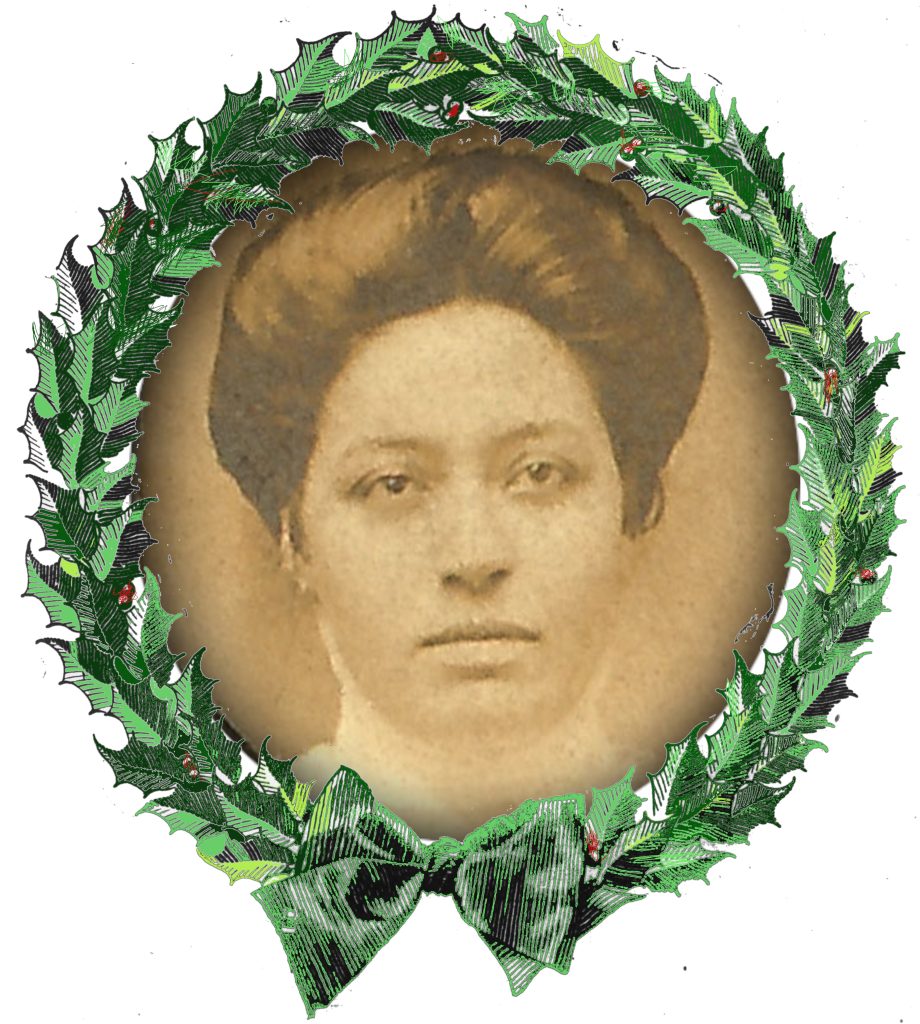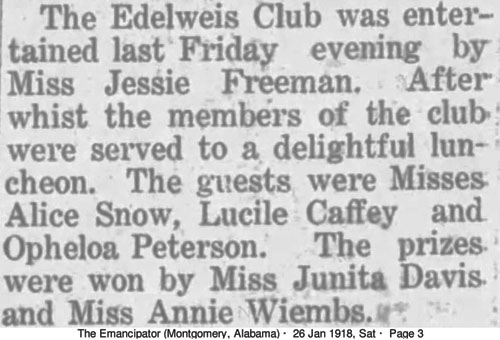
In 1918 and 1919 thirty-seven young women, friends and neighbors of my grandmother Fannie Mae Turner were members of the Edelweiss Club in Montgomery, Alabama. These are snapshots from their lives, place and times.
Click any image to enlarge
The weather that Christmas day was clear and cold, with temperatures dipping down to 24 degrees.
Madge Brown
In the 1920 census, Madge Brown lived with her parents, John and Julia Brown. Both parents were born during slavery in the mid 1850s. They would have been teenagers when the Civil war ended and they were emancipated. Mr. Brown was a farmer and owned his own farm free and clear. He had a truck farm and a stall at the city market where he and his wife sold vegetables. Mrs. Brown gave birth to eight children and six were living.
Madge’s sister, Elizabeth B. Deramus, her husband, James and their one year old son shared the home. Elizabeth taught music and her husband was a medical doctor. All the adults in the household were literate. Madge taught at Booker T. Washington school.
Rites Held For Madge M. Brown Retired Teacher
Miss Madge M. Brown, local retired public school teacher died here Friday night following a lingering illness. She was the daughter of the late John Napolean and Julia Arrington Brown.
Having served in the local school system 30 years, she was honored 3 years ago at Carver High school on her retirement. Her professional career included assignments at Loveless and Carver High.
She was active in several social and civic organizations and was a member of Dexter Avenue Baptist Churh, the March Month Club of Deter, Beta Sigma Chapter of the Sigma Gamma Rho Sorority and the local chapter of the National Federated Club.
Miss Brown was educated at Howard University and the local Alabama State Teachers College.
She is survived by two sisters, Mesdames N. Brown Saffold, Montgomery: Mrs. A. Brown Madison, Atlanta. Nieces included Medames Anna M. Blackwell, San Francisco, Cal’ Anne De Ramus Brown, Schenectady, N.Y., Dr. Helen dermus Mitchell, N. Y. City: nephews, Milton darden, Atlanta, Medames Laura Saffold Carter, Formosa (China), Mildred Banks, Baltimore, Md., June King, John Brown and Zisley Safford, all of this city.
Birmingham Mirror, Birmingham, Alabama • Sat, Feb 10, 1962 Page 10





